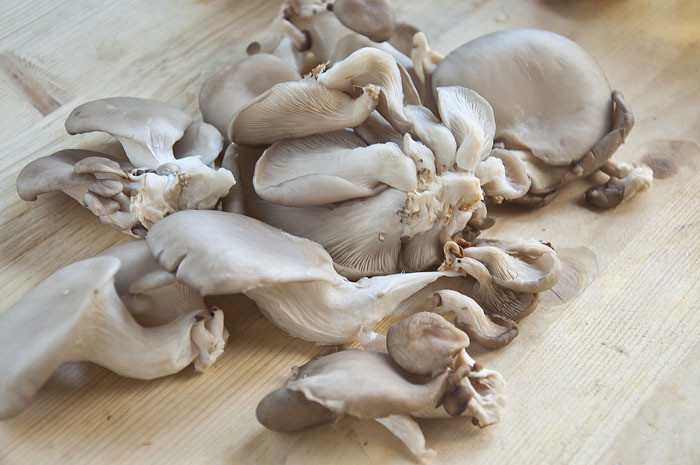Diet with cholecystitis
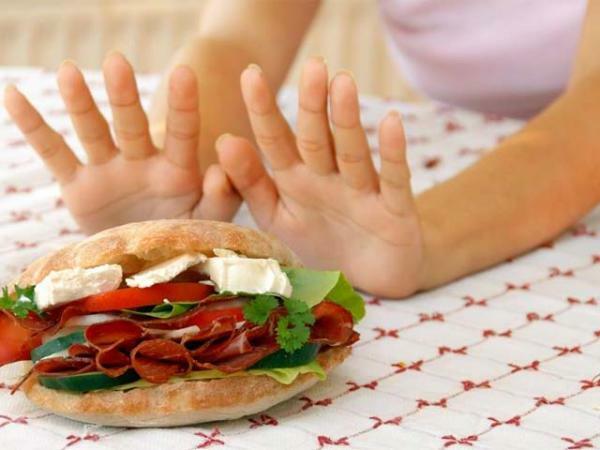
Specially selected nutrition for diseases is not a whim of doctors, but a real help to the body to cope with pathology more quickly.It is especially important to observe dietary nutrition in diseases of the gastrointestinal tract - after all, it will determine the outcome of the treatment and the effectiveness of the rehabilitation period.
Cholecystitis( inflammation of the gallbladder) is a pathological process that can occur in acute and chronic forms.Most often acute cholecystitis develops into a chronic form of the flow - this implies compliance with the diet for a long period of time, although in some cases, allowances and loosening in severe restrictions.
Table of contents: Diet for acute cholecystitis Diet for chronic cholecystitisDiet for acute cholecystitis
In the early days of this form of cholecystitis, doctors recommend that patients generally refuse to eat - you need to minimize the load on the digestive system.However, the attack of acute cholecystitis is always accompanied by a powerful pain syndrome - the patients lose their appetite.
It is allowed in the first days of illness to use:- freshly prepared( not canned!) Juices from berries and fruits;
- mineral water without gas;
- sweet tea is not strong;
- broth of dog rose( if there are no contraindications to its use).
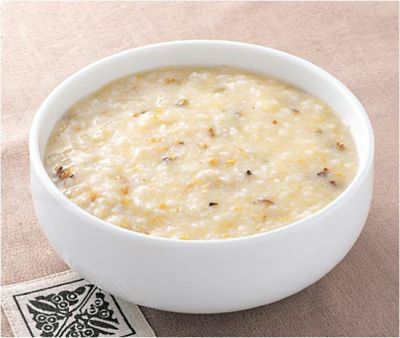 After the acute symptoms of the disease have subsided( as a rule, this happens in 1-2 days), the patient is allowed to enter in the ration of rubbed soups, mucous porridges, kissels, sweet tea with rusks( they should be made of white bread).
After the acute symptoms of the disease have subsided( as a rule, this happens in 1-2 days), the patient is allowed to enter in the ration of rubbed soups, mucous porridges, kissels, sweet tea with rusks( they should be made of white bread).
After 2-3 days, under the condition of absence of pain and other uncomfortable sensations, the patient is allowed to use low-fat cottage cheese, boiled fish of lean sorts and low-fat varieties of meat only in the garbled form.
Usually on the 5th-6th day after an attack of acute cholecystitis a remission comes, but doctors do not recommend immediately introducing the usual products into the patient's diet - at any moment, an exacerbation of the pathological condition may occur.Doctors recommend to adhere to a sparing diet for 3-4 weeks - this will help to translate the disease into a stable remission.
Diet for chronic cholecystitis
It will be a question of chronic cholecystitis in the stage of remission, because during the exacerbations of the pathological condition, the recommendations on nutrition will be identical in terms of acute cholecystitis.But for the compilation of a diet menu for cholecystitis of a chronic form during the period of remission, you need to know some of the features of the diet. These include:
-
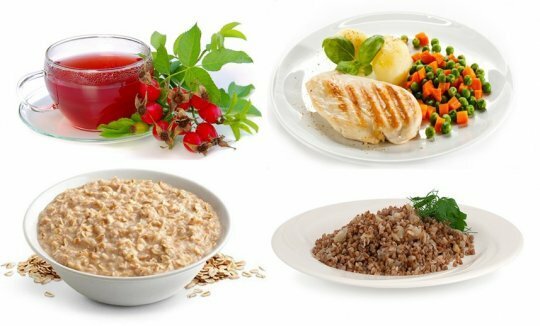 There should be at least 5 meals a day, but you do not have to do very large portions - just such a meal schedule will only have a sparing effect on the gallbladder's work.
There should be at least 5 meals a day, but you do not have to do very large portions - just such a meal schedule will only have a sparing effect on the gallbladder's work. - In a day patient cholecystitis should eat no more than 3, 5 kg of food.Moreover, this volume includes the liquid used during the day.
- The patient should have three basic meals a day and two intermediate meals - these are so-called snacks that allow eating fruits, cookies, kefir.
- It is necessary not only to clearly know the list of allowed products, but also to be able to prepare them correctly - it is allowed to eat only boiled and steamed dishes.In some cases( for example, if the remission lasts more than a year), it is allowed to eat baked vegetables and meat with fish, but when cooking this way, you can not add additional fats or oils to the products.
- Vegetable oils( olive, sunflower, corn and others) have a non-intensive choleretic property, so they can be used in salads, but it is strictly forbidden to use after heat treatment.
- The temperature of the dishes should not be too hot or too cold - you need to find a "golden mean".
- Vegetables should be present in the menu at every meal - they can be stewed, boiled or raw.Doctors recommend every day a patient cholecystitis eat avocado - let it be a small slice.
- Meat and fish contain extractives that irritate the gallbladder.Therefore, both meat and fish are cooked only by cooking or steaming.It is undesirable to use broths from these products in the first 3-4 weeks of stable remission, and the chicken should be freed from the skin.
What you can eat with cholecystitis
Food tasks for cholecystitis: minimize the load on the digestive system, relieve the patient of the inflammatory process and make the bile more fluid.And to achieve this goal, the patient must know exactly which foods and dishes are allowed to eat. Here is the main list:
- Fruit( non-acidic!), Vegetables and a variety of greens.They are the main source of vitamins and important microelements that will help raise and strengthen immunity.It is especially important in the daily menu to include pears of sweet varieties - it is this fruit that helps make bile more fluid.
- Bread is recommended only in dried form and it should not be a white variety - prefer bread with bran or grain products.It is allowed to eat and uneaten biscuits.
-
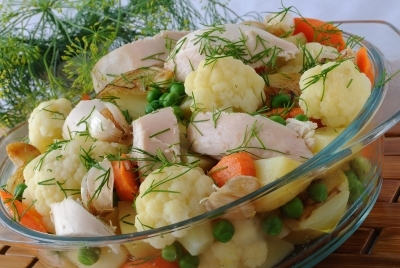 Decoction of rose hips, loose black tea, coffee with the addition of milk, fruit compotes( non-acid!).Beet juice is well-proven - eating it 2 times a day for ½ cup, you can significantly reduce the risk of developing another pain attack.It is useful to drink and drink from chicory.
Decoction of rose hips, loose black tea, coffee with the addition of milk, fruit compotes( non-acid!).Beet juice is well-proven - eating it 2 times a day for ½ cup, you can significantly reduce the risk of developing another pain attack.It is useful to drink and drink from chicory. - Sausage products( exclusively of the highest grade!), Lean meat and lean fish, bacon - all without seasonings and spices with a sharp taste.
- Chicken and quail eggs, but only in boiled form - if you prefer omelets, then prepare them from protein.
- Curd, sour cream, yogrut - low-fat, without the content of fruit and berry additives, flavor enhancers and flavorings.Marshmallow, marmalade and jam.Chocolate and cocoa should be discarded, in extreme cases - significantly limit their use.
Note: in cholecystitis is very useful to add turmeric to food - this seasoning helps to loosen bile and speeds up its removal from the body.
What can not be eaten with cholecystitis
Along with the list of approved products, a person with diagnosed cholecystitis should clearly know what foods and dishes are strongly discouraged from eating. These include:
- Any legumes - peas, beans, lentils and so on.They provoke increased gas formation, which in turn can cause an attack of worsening of chronic cholecystitis.
- Onion, garlic, radish and spinach - these vegetables contain a sufficient number of specific essential oils that irritatively affect the gastric mucosa and gall bladder.But consider - they can not be used only in raw form.
- Any canned products - meat, fish and home preparations, marinades, pickles.
- Horseradish and mustard - these seasonings have a beneficial effect on the production of gastric juice, which in turn provokes increased bile formation.Since the gallbladder is in an inflamed condition, it can not withdraw all the bile - it stagnates and exacerbates the disease in question.
- Liver, kidneys, fatty meat and fish.
- Mushrooms, sour fruits and berries - in any form.
- Any fried foods, smoked products, meat / fish broths, vinegar and any spicy sauces, spices.
- Pastry, ice cream, cocoa and chocolate.
- Alcohol, strong coffee.
Note: during remission on the background of diagnosed chronic cholecystitis the patient can consume no more than 9 tea spoons of sugar per day, salt - no more than 10 g.
Many people with diagnosed cholecystitis are interested in whether they can use honey.Doctors give an unambiguous answer - yes, you can.And even necessary!Moreover, not only in food, but also as a remedy.Especially useful procedures with honey to perform in those cases when the diet was violated - there is nothing terrible in this, by the way, no. Things to do:
- in the morning on an empty stomach to drink 100 ml of warm water with the addition of a tablespoon of honey;
- lie on your right side and put a heating pad under it.
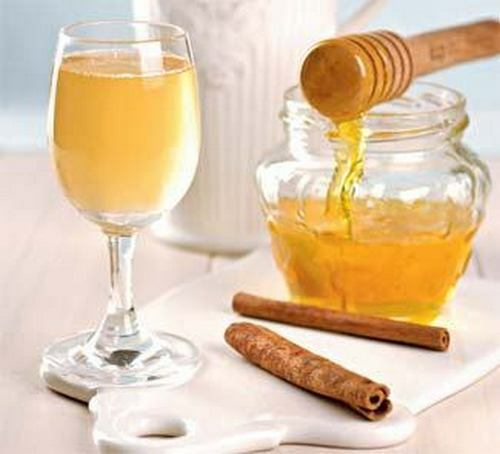 The time of this procedure is only 3 minutes, but it will help to remove all the accumulated bile from the bile ducts.The duration of the procedure is 5 days.
The time of this procedure is only 3 minutes, but it will help to remove all the accumulated bile from the bile ducts.The duration of the procedure is 5 days.
Note: no procedures for liquefaction and withdrawal of bile without a preliminary examination can not be carried out categorically.If there is even a small stone in the gallbladder or ducts, then the sudden movement of the bile can lead the patient to the operating table to provide emergency surgical care.
Sample menu for cholecystitis
To give you an idea of how to properly organize your diet for people with diagnosed cholecystitis, we present an approximate menu to the readers' attention.It is quite diverse, it will allow a person not to feel hungry and necessarily will saturate everyone.
Breakfast - cottage cheese pudding or lazy vareniki without sugar, porridge buckwheat with the addition of milk, weak tea without sugar.
The second breakfast is an apple of fresh sweet varieties.
Lunch in vegetable oil without meat broth, any meat boiled and served under dairy sauce, boiled carrots with sour cream, compote of dried fruits.
Snack - a decoction of rose hips and crackers from white bread.Dinner - fish of skinny sorts, boiled with herbs and seasoned with milk / cream sauce, vegetable cutlets( for example, cabbage-carrots), a glass of low-fat kefir.
Please note that the presented menu is very approximate - you can correct it, change it.If a person used to go to bed very late, then in this case, meals a day will not be 5, but 6. In the case of a long lasting stable remission( more than a year), you can be a little pampered with chocolate sweets and even barbecues.At night, after dinner, you can drink another glass of kefir or eat a small amount of ryazhenka - this will help to satisfy the feeling of hunger, but at the same time the minimum load will be given to the digestive system.
The diet for cholecystitis is an important part of the complex treatment of the disease, supporting the body and prolonging a stable remission for a long time.Therefore, it is so important for patients to adhere to all the recommendations mentioned in this material - the result will surely please everyone.
Tsygankova Yana Aleksandrovna, medical reviewer, therapeutist of the highest qualification category.


